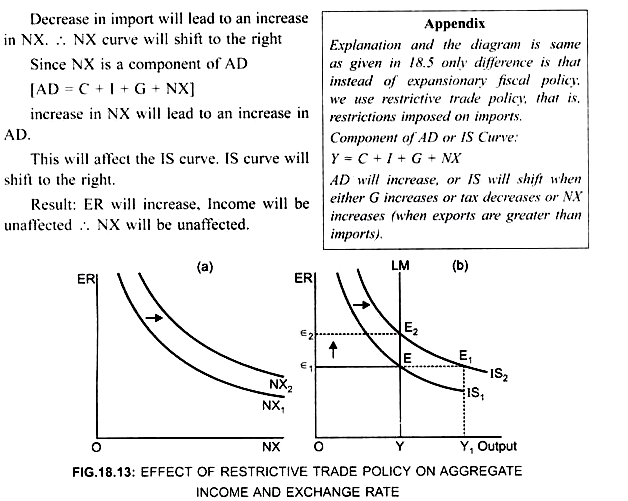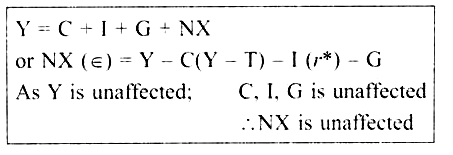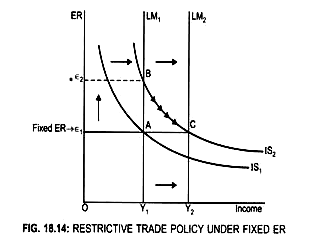Read this article to learn about Restrictive Trade Policy under Floating and Fixed Exchange Rate!
When Government imposes import quota or tariff to reduce import, exports will increase, imports will decrease and thus NX will increase.
When Government imposes import quota, NX will rise
NX curve shifts to the right to NX2 (Fig. 18.13(a))
... NX is a component of AD (Y = C + I + G + NX)
... AD will increase
Result:
ADVERTISEMENTS:
IS curve shifts to the right from IS1 to IS2 (Fig. 18.13(b))
At the given ER – є1, income level should increase to Y1, but at E1, IS2 ≠ LM
Reason:
LM curve is vertical straight line. It does not depend on the ER
ADVERTISEMENTS:
To achieve Equilibrium at E2 where IS2 = LM,
ER rises from є1 to є2
Increase in ER leads to fall in NX by same amount
... Income level decreases, it remains unaffected
Thus, NX (trade balance) is unaffected
Restrictive Trade Policy under Fixed ER (Not In Syllabus):
When Government tries to reduce import by imposing import quota, exports will increase, imports will decrease and thus NX will increase
As NX is a component of IS, increase in NX means shift in IS curve to the right from IS1 to IS2 (Fig. 18.14)
ER rises from є1 to є2
Equilibrium is at point B.
But at point B:
Fixed ER (є1) < Equilibrium ER (є2)
ADVERTISEMENTS:
To maintain Fixed ER, Central Bank will buy $ (arbitrageur sells $)
Result:
Money supply will increase
LM curve will shift to the right from LM1 to LM2
ADVERTISEMENTS:
ER falls from є2 to є1 and fixed ER is maintained
Income level rises from Y1 to Y2




